Actually, Excel doesn’t have infinite columns. Excel 2007 and all the newer versions have 16384 columns in total. The number is so huge for most of the uses of Excel, that the number of columns seems infinite. When you are working with a smaller dataset, these huge numbers of unused columns are absolutely unnecessary, and you may want to remove these columns from your spreadsheet. In this article, I’ll show you 4 easy ways to delete infinite columns in Excel.
Suppose, you have the following dataset where you’ve used the columns up to column E. Now, you want to remove the infinite number of columns starting from column G from your Excel sheet.
How to Delete Infinite Columns in Excel: 4 Methods
1. Delete Infinite Columns from Context Menu
We can use the Excel context menu for deleting infinite columns.
➤ Select the first column from where you want to delete infinite columns by clicking on the column number (i.e. column G).
➤ Press CTRL + SHIFT+ RIGHT arrow to select all the columns right to your selected column.
As a result, Excel displays the columns at the right end of your sheet and the area will be marked with gray color.
➤ Right-click on any of the column headers.
➤ The context menu will appear and select Delete from there.
As a result, the display will automatically return at the beginning of the sheet. You will see there is not an infinite number of columns. The last column number of your Excel datasheet is AA. That means now your Excel spreadsheet has only 27 columns.
You will find your existing dataset at the beginning of your Excel sheet.
Read More: How to Delete Multiple Columns in Excel
2. Remove Infinite Columns by Hiding
You can remove infinite columns by hiding all the unused columns.
➤ Select the first column from where you want to remove infinite columns by clicking on the column number (i.e. column G).
➤ Press CTRL + SHIFT + RIGHT arrow to select all the columns right to your selected column.
As a result, Excel displays the columns at the end of your sheet and the area will be marked with gray color.
➤ Go to Home > Cells > Format > Hide & Unhide > Select Hide Columns.
As a result, all the selected columns will be hidden. So, now you will see only the used columns in your Excel sheet.
3. Delete Infinite Columns by Unselecting Necessary Columns
Instead of selecting the unused columns, you can select all the columns and then unselect the used columns to delete the infinite columns.
➤ Click on the little sign at the top left corner of your Excel sheet where the row numbers and the column numbers meet.
It selects all the columns of your dataset.
➤ Unselect the columns that you don’t want to delete by pressing CTRL and clicking on the column number.
➤ Right-click on any of the column headers of the selected columns.
➤ The context menu will appear.
➤ Select Delete from this context menu.
As a result, the infinite columns will be deleted. Now, you will see the last column number of your Excel datasheet is AA. That means now your Excel spreadsheet has only 27 columns.
You may think still there are a number of unused columns but compared to the infinite number 27 is way less than that.
4. Remove Infinite Heights of the Columns
Each of the columns has 1,048,576 cells in it. Most of the time you will use only a few cells of each column. Now, I’ll show you how you can remove the infinite heights of the columns. To do that you will need to delete the infinite rows from your datasheet.
➤ Select the first row from where you want to delete the infinite height of the columns by clicking on the row number (i.e. row 18).
➤ Press CTRL + SHIFT + DOWN arrow to select all the columns at the bottom of your selected row.
As a result, Excel displays the rows at the bottom of your sheet and the area will be marked with gray color.
➤ Right-click on any of the row numbers and the context menu will appear.
➤ Select Delete from this context menu.
As a result, the display will automatically return at the beginning of the sheet. You will see now that the columns don’t have infinite heights.
The last row number of your Excel datasheet is 31. That means now your Excel spreadsheet has only 31 cells in each column.
It’s not the conventional way of deleting columns. Removing the row height may have an impact on the infinite columns.
Read More: How to Delete Blank Columns in Excel
Download Practice Workbook
Conclusion
By following any of the above-described methods you’ll learn how to delete infinite columns in Excel. Method 2 which is removing columns by hiding will allow you to have a neat and clean datasheet. Method 1 and 3 will delete the infinite columns and you’ll have only a limited number of columns in your Excel datasheet. By following method 4 you will be able to reduce the height of the columns of your Excel worksheet.
Related Articles
- How to Delete Every Other Column in Excel
- How to Delete Column in Excel Without Affecting Formula
- How to Delete Multiple Columns in Excel
- How to Delete Column in Excel Without Affecting Formula
- How to Delete Unused Columns in Excel
- How to Delete Multiple Columns in Excel with Condition
- How to Delete Unused Columns in Excel
- How to Delete Empty Columns with Header in Excel
- How to Delete Hidden Columns in Excel
- How to Delete Columns with Specific Text in Excel
- [Solved!] Can’t Delete Extra Columns in Excel
<< Go Back to Delete Columns | Columns in Excel | Learn Excel
Get FREE Advanced Excel Exercises with Solutions!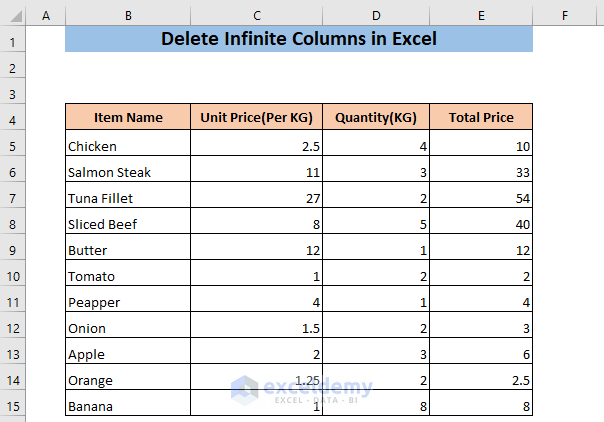
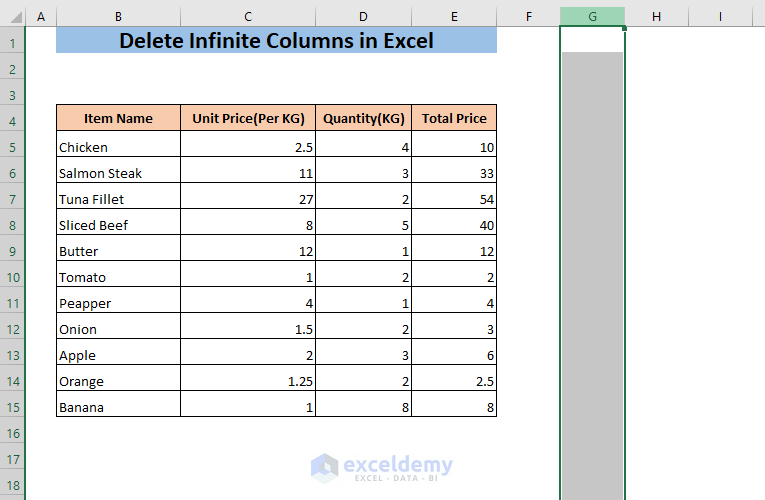
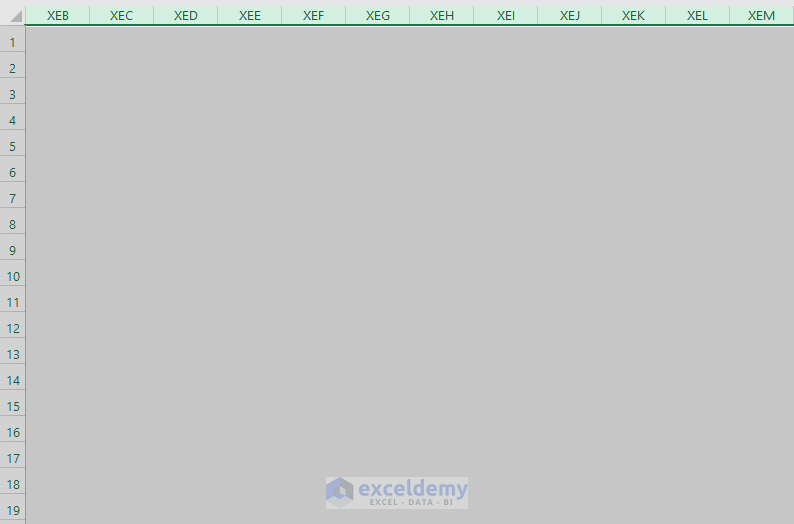
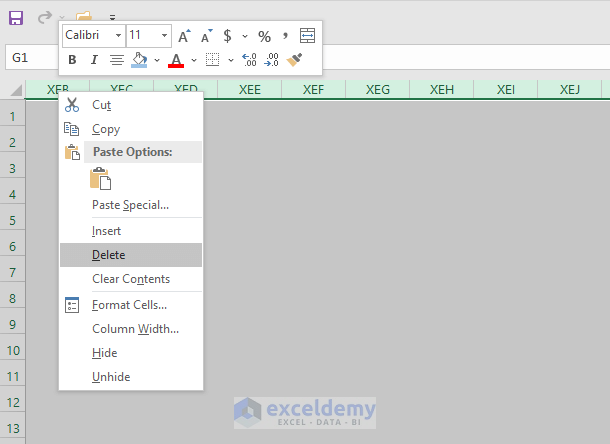

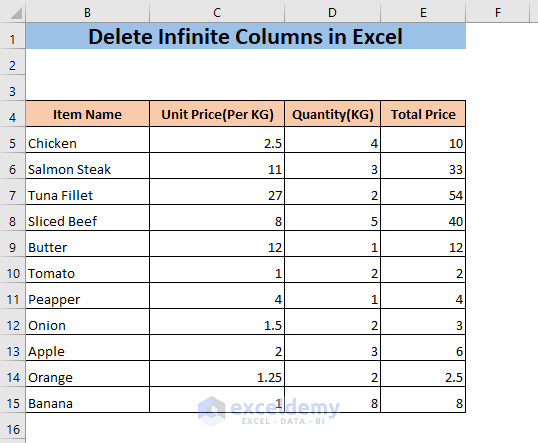
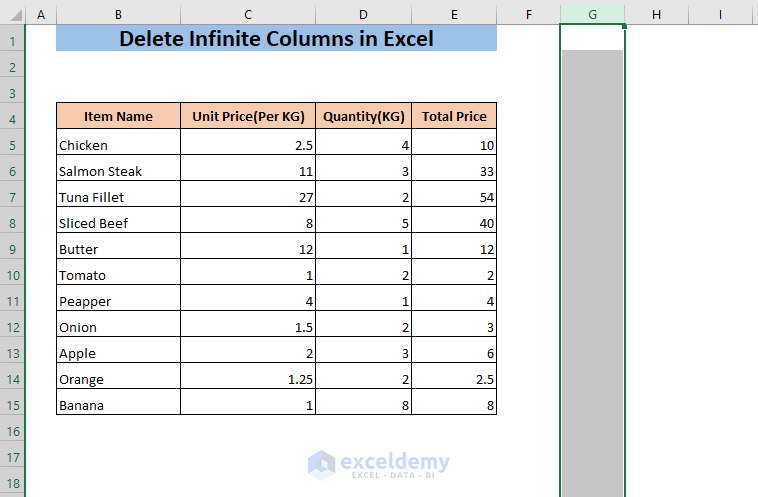
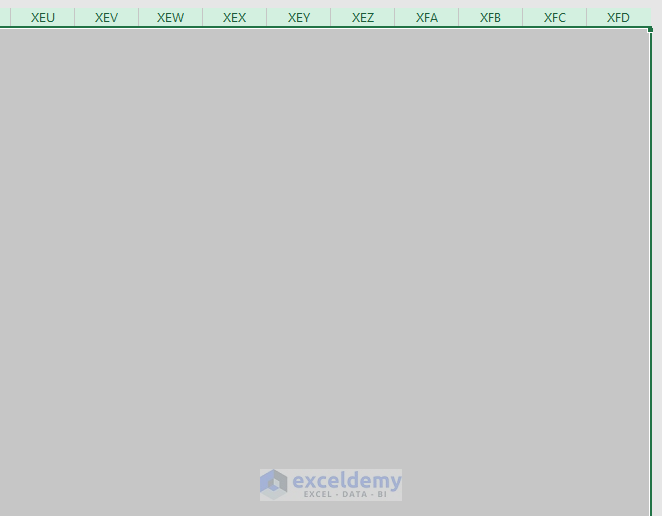
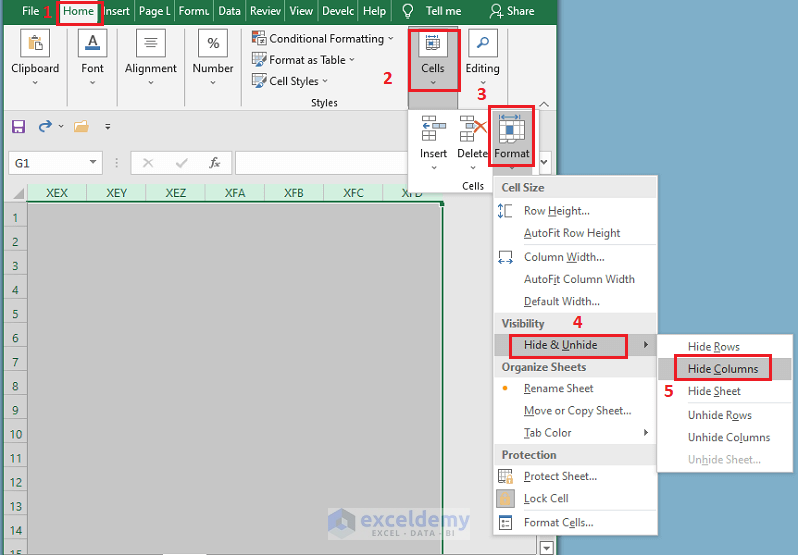
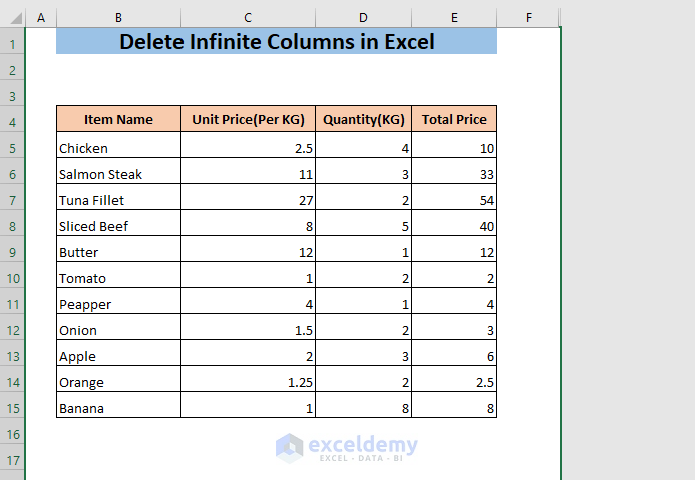
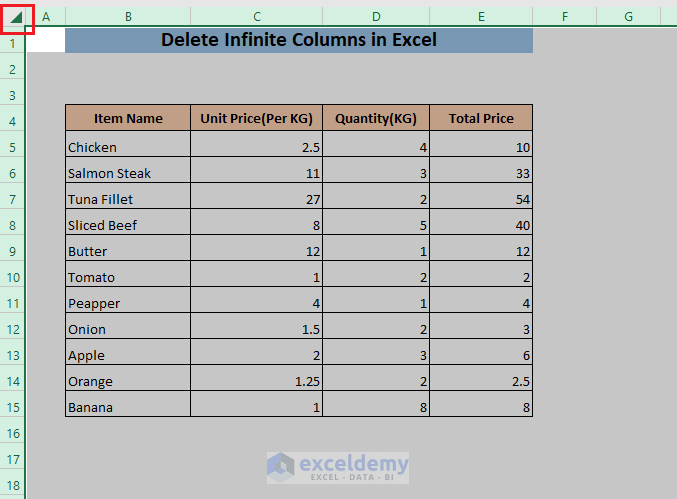
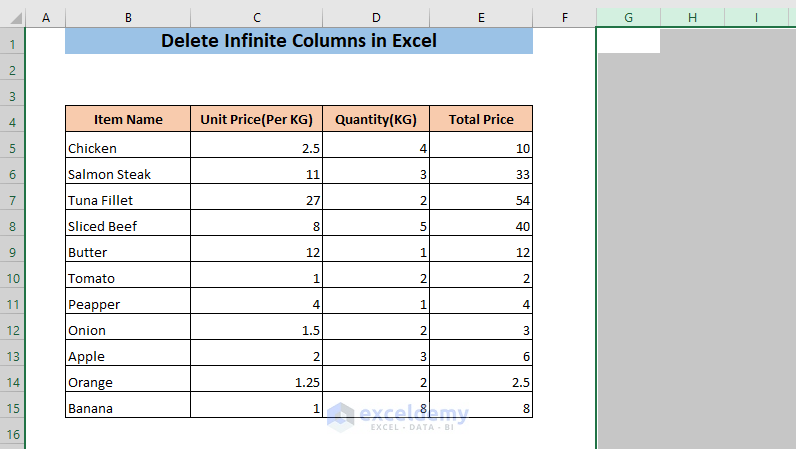
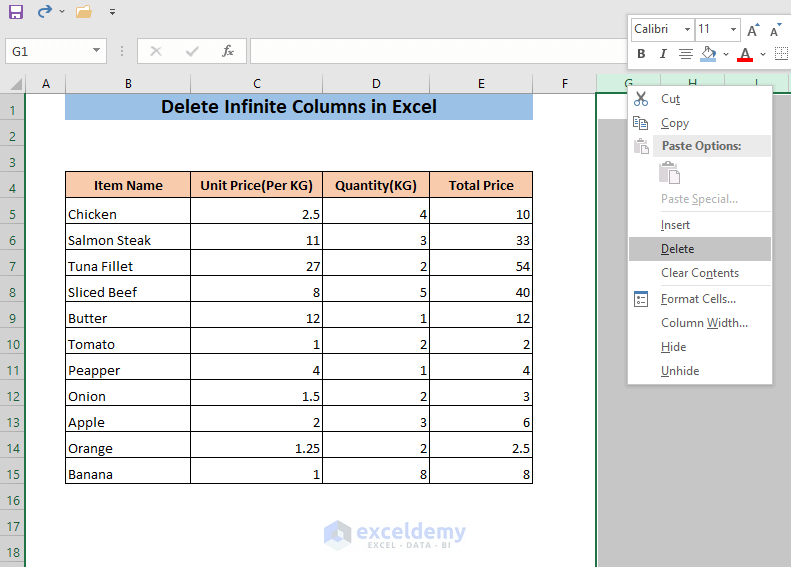
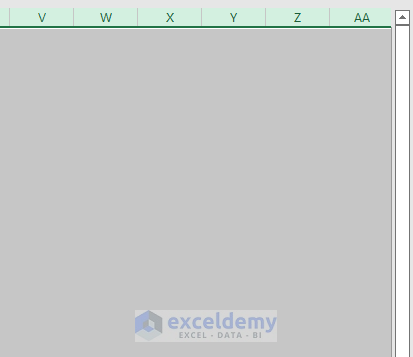
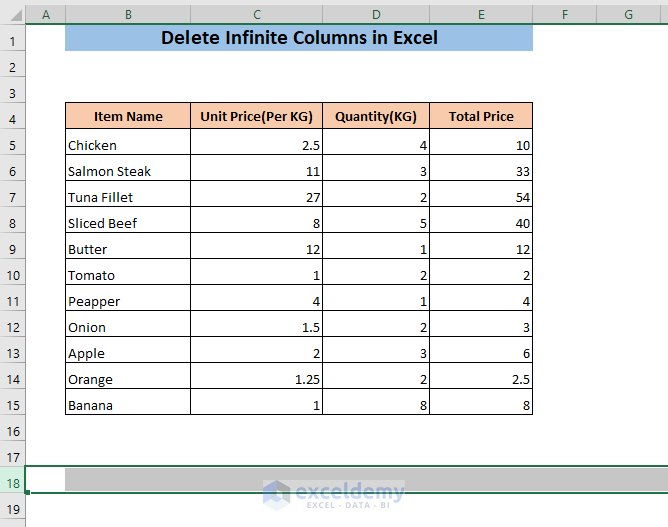

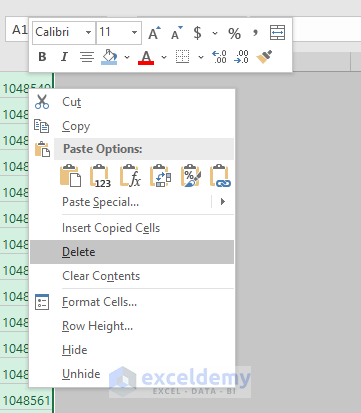
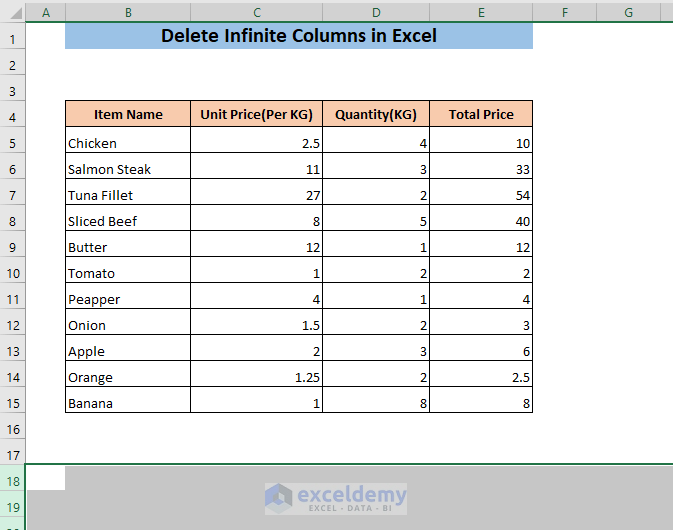




This does not work — the columns are still there, you just have to scroll past AA to see them.
Hello JOEY,
Actually, those columns have been deleted. If there were any data you would understand then. But, you got confused because all the deleted columns get replaced instantly with new ones and it happens so fast that we cannot detect it with our eyes. If you fill the first row with all columns and then apply this method, you could realize the change.
Thanks for your feedback. Please visit our website, ExcelDemy, a one-stop Excel solution provider, to explore more.